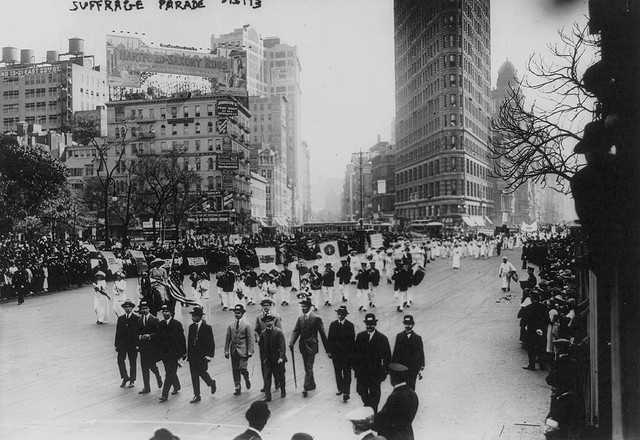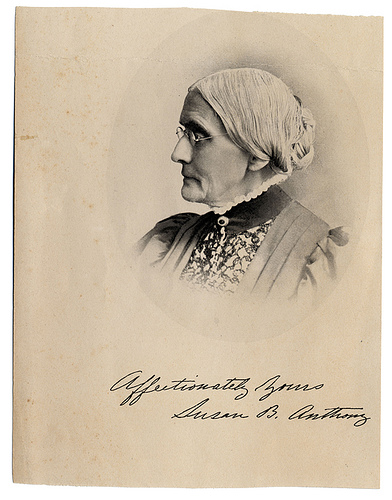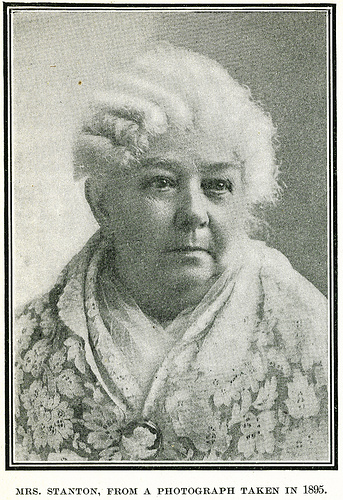
People have always schemed to gain political advantage over others. In the long age of kings, political equality was not even discussed but since democracy began to emerge in the late eighteenth century, more and more, people have sought and sometimes demanded political equality. For women in the United States, the right to vote did not come until 1920. Today in the United States, as across much of the world, the bigger issue is money, privilege and influence.
An unfortunate series of Supreme Court decisions has, de facto, replaced the principle of one person, one vote with something more akin to one dollar, one vote. Competitive politics is a zero-sum game. Abstract principles that lose sight of that fundamental fact can never achieve the goal of political equality.
When the Framers debated the United States Constitution, they were concerned whether the average person had the ability to exercise sound judgment in political affairs. Despite an increasingly well-educated population, that concern remains with us today. The number and complexity of issues have outstripped the ability of the average person to keep pace. With the rise of popular media, we have witnessed the tragic destruction of news in favor of entertainment. Political equality will demand an informed and astute citizenry. We have a long way to go but the goal remains the same.
Real
True Narratives
Voting rights histories:
- Alexander Keyssar, The Right to Vote: The Contested History of Democracy in the United States (Basic Books, 2000).
- Edmund S. Morgan, Inventing the People: The Rise of Popular Sovereignty in England and America (W. W. Norton & Co., 1988).
- Thomas J. Baldino and Kyle L. Kreider, Of the People, by the People, for the People: A Documentary Record of Voting Rights and Electoral Reform, vol. 1 (Greenwood, 2010).
- Laughlin McDonald, American Indians and the Fight for Equal Voting Rights (University of Oklahoma Press, 2010).
The women's suffrage movement in the United States:
- Aileen S. Kraditor, The Ideas of the Woman Suffrage Movement: 1890-1920 (W. W. Norton & Company, 1981).
- Jean H. Baker, Sisters: The Lives of America's Suffragists (Hill and Wang, 2005).
- Jean H. Baker, Votes for Women: The Struggle for Suffrage Revisited (Oxford University Press, 2002).
- Ann Bausam, With Courage and Cloth: Winning the Right for a Woman's Right to Vote (National Geographic Children's Books, 2004).
- Ellen Carol Dubois, Feminism and Suffrage: The Emergence of an Independent Women's Movement in America, 1848-1869 (Cornell University Press, 1978).
- Catherine H. Adams and Michael L. Keene, Alice Paul and the and the American Suffrage Campaign (University of Illinois Press, 2007).
- Marjorie Sprull Wheeler, New Women of the New South: The Leaders of the Woman Suffrage Movement in the Southern States (Oxford University Press, 1993).
African-American voting rights in the United States:
- R. Volney Riser, Defying Disenfranchisement: Black Voting Rights Activism in the Jim Crow South, 1890-1908 (Louisiana State University Press, 2010).
- J. Morgan Kousser, Colorblind Injustice: Minority Voting Rights and the Undoing of the Second Reconstruction (University of North Carolina Press, 1999).
- Brian K. Landsberg, Free at Last to Vote: The Alabama Origins of the 1965 Voting Rights Act (University of Kansas Press, 2007).
- Garth E. Pauley, LBJ's American Promise: The 1965 Voting Rights Address (TAMU Press, 2006).
From the dark side: unequal treatment
- Jeffrey Toobin, American Heiress: The Wild Saga of the Kidnapping, Crimes and Trial of Patty Hearst (Doubleday, 2016): “‘ . . . the prisons teem with convicts who were also led astray and who committed lesser crimes than Patricia. These unfortunate souls have no chance at even a single act of clemency, much less an unprecedented two. Rarely have the benefits of wealth, power and renown been as clear as they were in the aftermath of Patricia’s conviction.’”
- Adam Cohen, Supreme Inequality: The Supreme Court’s Fifty-Year Battle for a More Unjust America (Penguin Press, 2020): “. . . after it turned to the right in 1969, Cohen argues, the court also turned on the poor. Most of his book builds a brick-by-brick case for this thesis, with chapters on education, campaign finance, democracy, workers, corporations and criminal justice.”
Technical and Analytical Readings
- Charles R. Beitz, Political Equality: An Essay in Democratic Theory (Princeton University Press, 1989).
- Robert A. Dahl, On Political Equality (Yale University Press, 2006).
- Eva Erman and Sofia Näsström, Political Equality in Transnational Democracy (Palgrave Macmillan, 2013).
- Jill Locke, Democracy and the Death of Shame: Political Equality and Social Disturbance (Cambridge University Press, 2016). “The greatest threat to Western liberal democracies in the future is . . . likely to come from extreme inequality . . .”
- Bill Emmott, The Fate of the West: The Battle to Save the World’s Most Successful Political Idea (Public Affairs, 2017): “Emmott argues that the financial interests of banks and big companies have distorted and disarmed public policy.”
- Jeremy Waldron, One Another’s Equals: The Basis of Human Equality (Belknap Press, 2017): “Waldron warns that wide inequalities of income and wealth can erode this moral imperative because they make it harder to make the mental leap it requires . . . ”
- Sidney Verba, Norman H. Nie and Jae-on Kim, Participation and Political Equality: A Seven-Nation Comparison (University of Chicago Press, 1987).
Photographs
Documentary and Educational Films
On women’s suffrage
- One Woman, One Vote
- Not for Ourselves Alone: The Story of Elizabeth Cady Stanton & Susan B. Anthony video
- Iron Jawed Angels video
- Susan B. Anthony video
- Elizabeth Cady Stanton video
- By One Vote: Women Suffrage in the South video
- The Surprising Road to Women’s Suffrage video
President Lyndon Baines Johnson's 1965 voting rights address
Imaginary
Fictional Narratives
Poetry
Music: Composers, artists, and major works
Wolfgang Amadeus Mozart had no such thing as political equality in mind when he composed his Serenades for ensembles, many of them written in the highly resolved key of D major. Yet in these compositions we hear the mutually supportive voices of essentially equal partners in music. That is the nature and essence of political equality.
- Serenade No. 1 in D Major (Cassation in D Major), KV 100 [62a] (1769) (approx. 18’)
- Serenade No. 3 in D Major, KV 185, “Antretter” (1773) (approx. 35-44’
- Serenade No. 4 in D Major, KV 203, “Colloredo” (1774) (approx. 47’)
- Serenade No. 5 in D Major, KV 204, “Final-Musik” (1775) (approx. 38-39’)
- Serenade No. 6 in D Major, KV 239, “Serenata notturna” (1776) (approx. 15-21’)
- Serenade No. 7 in D Major, KV 250 (“Haffner”) (1776) (approx. 48-60’)
- Serenade No. 8 in D Major, KV 286, "Notturno for 4 Orchestras" (1776) (approx. 14-17’)
- Serenade No. 9 in D Major, KV 320 (“Posthorn”) (1779) (approx. 40-44’)
- Serenade No. 10 in B-flat major, KV 361 (“Gran Partita”) (1782) (approx. 49-51’)
- Serenade No. 11 in E-flat Major, KV 375 (1782) (approx. 25’)
- Serenade No. 12 in C minor, KV 388 (1782) (approx. 27’)
Albums:
- Aiofe O’Donovan, “All My Friends” (2024) (39’) is a commissioned album focused on women’s suffrage.
Music: songs and other short pieces
- Willie Nelson, “Vote ‘em Out” (lyrics)
- MILCK, “Quiet” (lyrics)
Visual Arts
Film and Stage
- Iron Jawed Angels, on the feminist and fearless suffrage advocate Alice Paul

